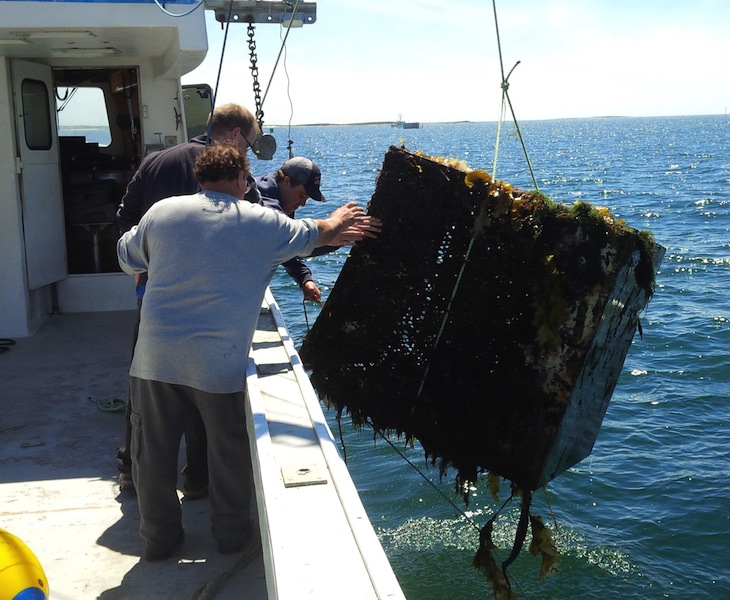
Features
Recirc
OPERATIONS – Winter Prep at the Hatchery
July 29, 2014 By Philip Nickerson
 Things you can do now to prepare northern hatcheries for winter ... and by doing so
Things you can do now to prepare northern hatcheries for winter ... and by doing soWhat would you not enjoy doing in a blizzard? The answer to that question helps motivate pre-winter preventative maintenance. While the weather may still be nice, the approach of winter and its dubious charms is inevitable. Here are some things to consider before the snow flies.
Back-up generator
The back-up electrical system is critical to the survival of the hatchery or farm. Winter brings with it several causes of power loss: ice and wet snow, for example. It also brings cold weather that could make a generator hard to start. Have the genset checked over, tuned up, and ready to operate. Weekly tests help staff understand how to operate the generator and keep it in running condition.
Some things specifically to check for winter are:
• The block heater operation.
• The coolant quality to prevent freezing and cold starts.
• The battery and its charging systems.
Oxygen system
Oxygen delivery systems are typically composed of a multitude of tees, hoses, and other fittings. The oxygen inside the system, the harsh hatchery conditions, the temperature swings and UV exposure outside, all contribute to wear on the hoses and fittings. A regular leak check should be performed. Do one shortly before winter as it is much easier to replace hoses and fittings when they (and your fingers) are warm.
Yard clean-up
If it snows in your region, anything lying around the yard will be difficult to find or see. To avoid injury from tripping over things, or to avoid destroying things with snow removal equipment, clean up the yard. Pile items neatly in an area protected from high winds. Take pictures of the yard and of the items piled in each area, in case you need to find something buried by snow.
Secure the building
Examine the building itself looking for areas where snow or winds can cause damage. A loose eaves trough or piece of siding, a hole in the wall for a pipe that was added but not properly sealed, the corner of the building damaged by the delivery guy or by a hurricane; fix them while the weather cooperates.
Exposed pipes and equipment
This is perhaps the first thing we think of, but the hardest one to implement. Insulating or burying any exposed pipes should prevent damage from freezing. Other options are draining the pipes (and any equipment) that will be exposed to sub-zero temperatures. Or, if needed regularly during the winter, never turning them off.
Intake cleaning
The water source to a hatchery can often be very difficult to work on during the winter months. A fall inspection and cleaning can prevent the need to cut through the ice or ask a diver to swim in frigid winter waters. Well water supply could also be considered for service before winter sets in. Some wells have screens around the foot valve that can clog up and restrict water flow from the well.
Heating system
A heating system that has been turned off for the summer should get some attention well before it is desperately needed. Testing of both the operation and the controls should be done while there is time to properly replace any parts that may be worn, seized, or rusted.
Heat recovery is a vital part of many water heating systems. A thorough cleaning to remove dirt from the plates will increase heat transfer through the exchanger and decrease your heating energy consumption.
If you heat with fossil fuels, recommended tasks are a furnace cleaning and filter changes. Check your manufacturer’s recommendations for regular service to the heating system and its components and follow through. Furnace performance can often be tested for efficiency and adjusted to peak efficiency to save you money all year.
If you heat with heat pumps, test controls and operation. Check for leaks on all accessible joints and have them repaired while down time is still an easy-to-manage option. Briefly running the heat pump each week during the summer period, will help to keep it in working condition.
Snow removal
Have salt on hand to melt ice so walkways and work areas are safe for staff.
Have a snow removal plan prepared. Answer questions such as who will be keeping doorways clear, who will be clearing snow from driveways, who will be staying the night during blizzards, or responding to alarms during winter conditions.
Wax your shovels, and remember to relish the autumn weather and colors.
— Philip Nickerson
Philip Nickerson, B.Eng. is the Technical Manager and Engineer for Scotia Halibut Limited in Nova Scotia, Canada. He also owns and operates an aquaculture design and operations company – Aqua Production Systems Incorporated. To continue discussions from the article, contact him at: philipnickerson@gmail.com
Print this page





